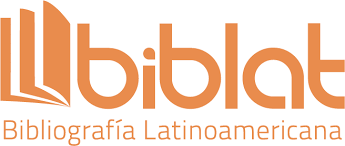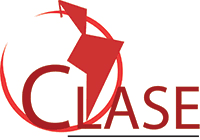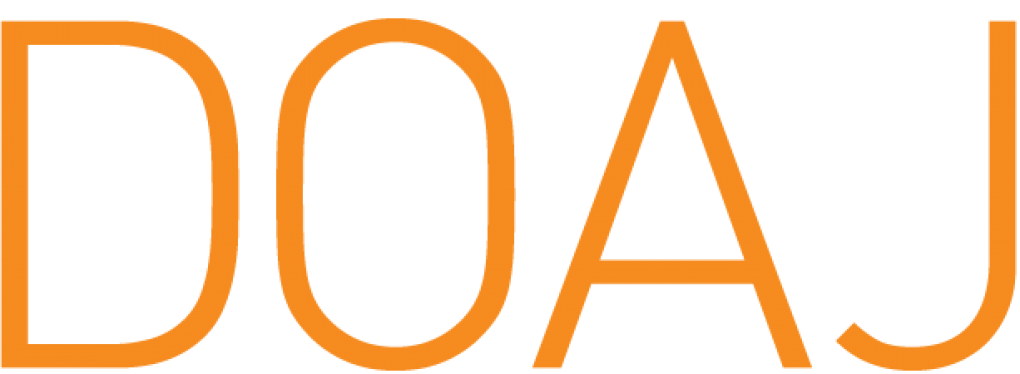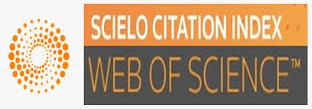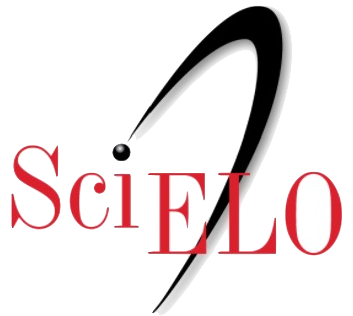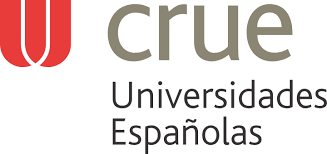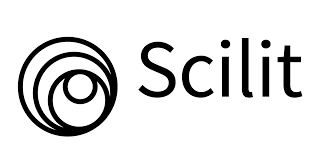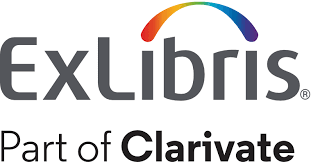Reporte de caso clínico: endometritis crónica en una yegua criolla colombiana
DOI:
https://doi.org/10.22335/rlct.v15i1.1686Palabras clave:
endometritis crónica, yegua, citología uterina, biopsia endometrialResumen
La endometritis se define como la inflamación del endometrio, y es considerada una de las principales causas de sub e infertilidad en la yegua, que generan pérdidas económicas significativas, con una incidencia del 10 al 15 %. Existen diferentes etiologías, destacándose la mala conformación del perineo, útero abdominal, pérdida de la actividad miometrial, número de montas, factores moleculares y genéticos, y la presencia de bacterias y hongos. El presente artículo expone el caso de una yegua criolla colombiana de 15 años con historial de abortos y nula obtención de embriones, donde fueron realizados como métodos diagnósticos la evaluación del sistema genital externo e interno, ultrasonografía, citología, cultivo y biopsia endometrial; la cual reportó endometritis crónica de clasificación II B, asociada edema tipo 4, y estableciendo un pronóstico reservado para la reproducción, después de comprobarse la endometritis fúngica. El tratamiento consistió en la utilización de complejos vitamínicos, medicina biorreguladora, terapia antimicótica y antibiótica, nutraceúticos, minerales, y lavados intrauterinos. Posterior a la medicación y tres intervalos ovulatorios consecutivos, fueron recuperados y transferidos exitosamente cuatro embriones, de los cuales tres llegaron a término, demostrando así la recuperación de la función endometrial, gracias a la identificación de los microorganismos involucrados y el establecimiento de una terapia adecuada y complementada.
Descargas
Referencias
Abbas, M., Taha, M., Disi, A., y Shomaf, M. (2013). Regression of endometrial implants treated with vitamin D3 in a rat model of endometriosis. European Journal of Pharmacology, 715(1-3), 72-75. https://doi.org/10.1016/j.ejphar.2013.06.016
Abo, M., Shata, Y., y Gabr, I. (2012). Antioxidents Markers, Trace Minerals and Steroid Hormones in Preconceptional Arab Mares. Global Veterinaria, 9(3), 311-318. https://www.researchgate.net/profile/Amal-Abo-El-Maaty/publication/286520165_Antioxidents_markers_trace_minerals_and_steroid_hormones_in_preconceptional_Arab_mares/links/570ca57908aee0660351bc6c/Antioxidents-markers-trace-minerals-and-steroid-hormones-in-preconceptional-Arab-mares.pdf
Atti-Santos, A., Rossato, M., Pauletti, G., Rota, L., Rech, J., Pansera, M., Agostini, F., Serafini, L., y Moyna, P. (2005). Physico-chemical evaluation of Rosmarinus officinalis L. essential oils. Brazilian archives of biology and technology, 48(6), 1035-1039. https://doi.org/10.1590/s1516-89132005000800020
Badary, D., y Abou, H. (2020). Vitamin D receptor and cellular retinol-binding protein-1 immunohistochemical expression in normal, hyperplastic and neoplastic endometrium: Possible diagnostic and therapeutic implications. Annals of Diagnostic Pathology, 48(151569), 151569. https://doi.org/10.1016/j.anndiagpath.2020.151569
Baldioli, M., Servili, M., Perretti, G., y Montedoro, G. F. (1996). Antioxidant activity of tocopherols and phenolic compounds of virgin olive oil. Journal of the American Oil Chemists’ Society, 73(11), 1589-1593. https://doi.org/10.1007/bf02523530
Bogdan, L., Groza, I., Andrei, S., Pintea, A., Ciupe, S., Cenariu, M., Bogdan, I., Pasca, I., Bogdan, S., Petrean, A., y Macri, A. (2009). Therapeutic and immunomodulatory effect of two complex homeopathic products used against chronic endometritis in Simmental cows. Journal of Food, Agriculture & Environment, 7(2), 243-246. https://www.academia.edu/download/73991813/Therapeutic_and_immunomodulatory_effect_20211031-2182-16bt1zc.pdf
Bucca, S., Carli, A., Buckley, T., Dolci, G., y Fogarty, U. (2008). The use of dexamethasone administered to mares at breeding time in the modulation of persistent mating induced endometritis. Theriogenology, 70(7), 1093-1100. https://doi.org/10.1016/j.theriogenology.2008.06.029
Caissie, M., Gartley, C., Scholtz, E., Hewson, J., Johnson, R., y Chenier, T. (2020). The effects of treatment with N-acetyl cysteine on clinical signs in persistent breeding-induced endometritis susceptible mares. Journal of Equine Veterinary Science, 92. https://doi.org/10.1016/j.jevs.2020.103142
Carnota, S. (2019). Endometritis en la yegua: diagnóstico y tratamiento. [Trabajo de pregrado, Universidad de Santiago de Compostela]. Repositorio institucional USC. https://minerva.usc.es/xmlui/bitstream/handle/10347/20539/TFG_VET_2019_Carnota_Martinez_Sara.pdf?sequence=1&isAllowed=y
Causey, R., Miletello, T., O’donnell, L., Lyle, S., Paccamonti, D., Anderson, K., Eilts, B., Morse, S., y LeBlanc, M. (2008). Pathologic effects of clinical uterine inflammation on the equine endometrial mucosa. In American Association of Equine Practitioners, 54, 276-277. https://aaep.org/sites/default/files/issues/proceedings-08proceedings-z9100108000276.PDF
Dascanio, J., Schweizer, C., y Ley, W. (2001). Equine fungal endometritis. Equine Veterinary Education, 13(6), 324-329. https://beva.onlinelibrary.wiley.com/doi/abs/10.1111/j.2042-3292.2001.tb00122.x
Díaz, M. (2012). Estudio Microbiológico de Infertilidad en Yeguas. [Tesis doctoral, Universidad de Las Palmas, Gran Canaria]. https://accedacris.ulpgc.es/bitstream/10553/10282/4/0681281_00000_0000.pdf
Duarte, C. (2020). Reporte de caso: De la imposibilidad de un mosaicismo infértil hacia la restauración de la red hormonal reproductiva. Presentado para el XXXI simposio internacional de Medicina Biorreguladora de Sistemas, Biologische Heilmittel Heel GmbH. https://www.eduka-heel.com/es/simposio
Dunnett, C. (2008). Selenium: Key Breeding Element. https://www.vettimes.co.uk/app/uploads/wp-post-to-pdf-enhanced-cache/1/selenium-key-breeding-element.pdf
Esposito, J., Pinto, D., Rodrigues, F., Saba, A., Manera, C., Digiacomo, M., y Maccia, M. (2022). Oleocanthalic acid from extra-virgin olive oil: Analysis, preparative isolation and radical scavenging activity. Journal of Food Composition and Analysis, 105. https://doi.org/10.1016/j.jfca.2021.104160
Ferris, R. A., Scofield, D. B., Hatzel, J. N., y McCue, P. M. (2012). Coccidioides immitus fungal endometritis in an embryo donor mare. Journal of Equine Veterinary Science, 32(7), 419-420. https://doi.org/10.1016/j.jevs.2012.05.048
García, O., Ruiz, C., Gutiérrez, A., Illescas, R., y Melguizo, L. (2018). Benefits of olive oil phenolic compounds in disease prevention. Endocrine, Metabolic & Immune Disorders Drug Targets, 18(4), 333-340. https://doi.org/10.2174/1871530318666180213113211
Ginther, O. J., Gastal, M. O., Gastal, E. L., Jacob, J. C., Siddiqui, M. A. R., y Beg, M. A. (2008). Effects of age on follicle and hormone dynamics during the oestrous cycle in mares. Reproduction, Fertility, and Development, 20(8), 955-963. https://doi.org/10.1071/rd08121
Griffiths, L., Loeffler, S., Socha, M., Tomlinson, D., y Johnson, A. (2007). Effects of supplementing complexed zinc, manganese, copper and cobalt on lactation and reproductive performance of intensively grazed lactating dairy cattle on the South Island of New Zealand. Animal Feed Science and Technology, 137(1-2), 69-83. https://doi.org/10.1016/j.anifeedsci.2006.10.006
Güney, M., Oral, B., Demirin, H., Ozgüner, M., Take, G., Mungan, T., y Altuntas, I. (2007). Evaluation of caspase-dependent apoptosis during methyl parathion-induced endometrial damage in rats: Ameliorating effect of Vitamins E and C. Environmental Toxicology and Pharmacology, 23(2), 221-227. https://doi.org/10.1016/j.etap.2006.10.002
Hobson, R. (2016). Vitamin E and wound healing: an evidence-based review. International Wound Journal, 13(3), 331-335. https://doi.org/10.1111/iwj.12295
Hurtgen, J. (2006). Pathogenesis and treatment of endometritis in the mare: a review. Theriogenology, 66(3), 560-566. https://doi.org/10.1016/j.theriogenology.2006.04.006.
Instituto Colombiano Agropecuario [ICA]. (2018). Censos Pecuarios Nacional. https://www.ica.gov.co/areas/pecuaria/servicios/epidemiologia-veterinaria/censos-2016/censo-2018
Katila, T. (2016). Evaluation of diagnostic methods in equine endometritis. Reproductive Biology, 16(3), 189-196. https://www.sciencedirect.com/science/article/abs/pii/S1642431X16300195
Kumar, A., Katiyar, R., Firdous, S., Balamurugan, B., Deepak, D., y Prasad, J. (2018). Current Treatment Aspects of Bovine Reproductive Disorders. Theriogenology Insight, 8(3), 101-109. https://www.researchgate.net/profile/Rahul_Katiyar/publication/332093593_Current_Treatment_Aspects_of_Bovine_Reproductive_Disorders/links/5c9f3c14a6fdccd46043d0d3/Current-Treatment-Aspects-of-Bovine-Reproductive-Disorders.pdf
Kumar, R., Diwakar, R., Verma, H., Kumar, A., Kumar, P., Singh, K. y Yadav, V. (2020). The Saga of Macrominerals and its Role in Reproduction in Domestic Animals: A Review. Global Veterinaria, 22(5), 267-272. https://doi.org/10.5829/idosi.gv.2020.267.272
Leblanc, M. M., Neuwirth, L., Jones, L., Cage, C., y Mauragis, D. (1998). Differences in uterine position of reproductively normal mares and those with delayed uterine clearance detected by scintigraphy. Theriogenology, 50(1), 49-54. https://doi.org/10.1016/S0093-691X(98)00112-5
Leblanc, M. M. (2008). When to refer an infertile mare to a theriogenologist. Theriogenology, 70(3), 421-429. https://doi.org/10.1016/j.theriogenology.2008.04.021
Leblanc, M, M., y Causey, R, C. (2009). Clinical and subclinical endometritis in the mare: both threats to fertility. Zuchthygiene. Reproduction in Domestic Animals, 44(3), 10-22. https://doi.org/10.1111/j.1439-0531.2009.01485.x
Ling, C., Celli, A., Mauro, T., y Chang, W. (2018). Calcium-sensing receptor regulates epidermal intracellular Ca2+ signaling and re-epithelialization after wounding. The Journal of Investigative Dermatology, 139(4), 919-929. https://doi.org/10.1016/j.jid.2018.09.033
Lisboa, F., Silvestre, W., Castro, J., Martins, G., Segabinazzi, L., Pauletti, G., y Dell’Aqua, J. (2022). In Vitro Antimicrobial Activity of Selected Essential Oils Against Endometritis-Causing Microorganisms in Mares. Journal of Equine Veterinary Science, 110. https://doi.org/10.1016/j.jevs.2021.103840
Liu, I., y Troedsson, M. (2008). The diagnosis and treatment of endometritis in the mare: Yesterday and today. Theriogenology, 70(3), 415-420. https://www.sciencedirect.com/science/article/abs/pii/S0093691X08002707
Madej, D., Pietruszka, B., y Kaluza, J. (2021). The effect of iron and/or zinc diet supplementation and termination of this practice on the antioxidant status of the reproductive tissues and sperm viability in rats. Journal of Trace Elements in Medicine and Biology, 64. https://doi.org/10.1016/j.jtemb.2020.126689
Markiewicz, M., Wójtowski, J., Czyżak, G., Kuczyńska, B., Puppel, K., Krzyżewski, J., Strzałkowska, N., Jóźwik, A., y Bagnicka, E. (2014). Concentration of selected fatty acids, fat-soluble vitamins and β-carotene in late lactation mare’s milk. International Dairy Journal, 38(1), 31-36. https://doi.org/10.1016/j.idairyj.2014.04.003
Melguizo, L., Illescas, R., Costela, V., Ramos, J., de Luna, E., García, O., y Ruiz, C. (2021). Antimicrobial properties of olive oil phenolic compounds and their regenerative capacity towards fibroblast cells. Journal of Tissue Viability, 30(3), 372-378. https://doi.org/10.1016/j.jtv.2021.03.003
Mohammed, B., Fisher, B., Kraskauskas, D., Ward, S., Wayne, J., Brophy, D., Fowler, A., Yager, D., y Natarajan, R. (2016). Vitamin C promotes wound healing through novel pleiotropic mechanisms. International Wound Journal, 13(4), 572-584. https://onlinelibrary.wiley.com/doi/10.1111/iwj.12484
Morales, P. y Castro, R. (2018). Estimation of the uterine integrity in chilean purebred mares and its association with age and foaling number. Revista de Investigaciones Veterinarias del Perú, 29(2), 565-574. https://www.cabdirect.org/cabdirect/abstract/20183205416
Nasiadek, M., Stragierowicz, J., Klimczak, M., y Kilanowicz, A. (2020). The role of zinc in selected female reproductive system disorders. Nutrients, 12(8). https://doi.org/10.3390/nu12082464
Nielsen, J. (2005). Endometritis in the mare: a diagnostic study comparing cultures from swab and biopsy. Theriogenology, 64(3), 510-518. https://doi.org/10.1016/j.theriogenology.2005.05.034
Otálvaro, L., Correa, C., Velásquez, C., y Maldonado, J. (2009). Falla ovárica en una yegua de paso fino colombiano: tratamiento combinado homeopático antihomotóxico y hormonal. Reporte de un caso. Revista Colombiana de Ciencias Pecuarias, 22(4), 665-675. http://www.scielo.org.co/scielo.php?script=sci_arttext&pid=S0120-06902009000400010
Papa, F., Melo, C., Monteiro, G., Papa, P., Guasti, P., Maziero, R., Derussi, A., Magalhães, L., Martin, J., y Martin, I. (2014). Equine perineal and vulvar conformation correction using a modification of pouret’s technique. Journal of Equine Veterinary Science, 34(3), 459-464. https://doi.org/10.1016/j.jevs.2013.07.019
Pascua, A., Nikoloff, N., Carranza, A., Anchordoquy, J., Quintana, S., Barbisán, G., Díaz, S., Anchordoquy, J., y Furnus, C. (2020). Reproductive hormones influence zinc homeostasis in the bovine cumulus-oocyte complex: Impact on intracellular zinc concentration and transporters gene expression. Theriogenology, 146, 48-57. https://doi.org/10.1016/j.theriogenology.2020.01.054
Pasek, M. (2019). A role for phosphorus redox in emerging and modern biochemistry. Current Opinion in Chemical Biology, 49, 53-58. https://doi.org/10.1016/j.cbpa.2018.09.018
Peacey, L., Elphick, M., y Jones, C. (2020). Roles of copper in neurokinin B and gonadotropin-releasing hormone structure and function and the endocrinology of reproduction. General and Comparative Endocrinology, 287(113342), 113342. https://doi.org/10.1016/j.ygcen.2019.113342
Polcz, M., y Barbul, A. (2019). The role of vitamin A in wound healing. Nutrition in Clinical Practice: Official Publication of the American Society for Parenteral and Enteral Nutrition, 34(5), 695-700. https://doi.org/10.1002/ncp.10376
Rodríguez, L. M., Montes, R. I., Costela, V. J.,Ramos, J.,Bertos, E., García, O., & Ruiz, C. (2021). Antimicrobial properties of olive oil phenolic compounds and their regenerative capacity towards fibroblast cells. Journal of Tissue Viability, 30 (3), 372-378. https://doi.org/10.1016/j.jtv.2021.03.003
Springman, S. A., Drewnoski, M. E., & Funston, R. N. (2021). Effects of hydroxy trace mineral supplementation on gain and reproductive performance in beef heifers. Livestock Science, 245. https://doi.org/10.1016/j.livsci.2021.104425
Stout, T. (2008). Fungal endometritis in the mare. Pferdeheilkunde, 24(1), 83-87. https://doi.org/10.21836/pem20080117
Wolf, C., Maslchitzky, E., Gregory, R., Jobim, M., y Mattos, R. (2012). Effect of corticotherapy on proteomics of endometrial fluid from mares susceptible to persistent postbreeding endometritis. Theriogenology, 77(7), 1351-1359. https://doi.org/10.1016/j.theriogenology.2011.10.042
Woodward, E., Christoffersen, M., Campos, J., Squires, E., y Troedsson, M. (2012). Susceptibility to persistent breeding-induced endometritis in the mare: relationship to endometrial biopsy score and age, and variations between seasons. Theriogenology, 78(3), 495-501. https://doi.org/10.1016/j.theriogenology.2012.02.028
Zinder, R., Cooley, R., Vlad, L., y Molnar, J. (2019). Vitamin A and wound healing. Nutrition in Clinical Practice: Official Publication of the American Society for Parenteral and Enteral Nutrition, 34(6), 839-849. https://doi.org/10.1002/ncp.10420
Publicado
Versiones
- 2022-12-16 (3)
- 2022-12-12 (2)
- 2022-12-08 (1)
Número
Sección
Licencia
Derechos de autor 2022 Revista Logos Ciencia & Tecnología

Esta obra está bajo una licencia internacional Creative Commons Atribución 4.0.
Esta revista provee acceso libre e inmediato a su contenido (https://creativecommons.org/licenses/by-nc-nd/4.0/), bajo el principio de hacer disponible gratuitamente la investigación al público y apoyar a un mayor intercambio de conocimiento global.

